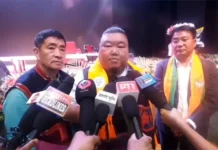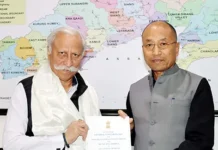Flights Of Fantasy
[ M Panging Pao ]
Many Arunachali old-timers recall the 1962 Sino-India conflict with fear and anger. The Chinese forces entered deep into Arunachal Pradesh along many axes like Taksing-Limeking, Mechuka/Manigong-Tato, Gelling-Tuting, Kibithoo-Walong axes and the main Tawang-Bomdila-Rupa axis. Many readers are not aware of fierce battles fought by our brave soldiers. One such story is the story of Havildar Malkiat Singh.
Havildar Malkiat Singh hailed from Jalandhar in Punjab. He belonged to the 9 Punjab and his unit was deployed at Karpola north of Tsengjong in Tawang district of Arunachal Pradesh during the Sino-India war of 1962.
In the years preceding the Sino-India war of 1962, the Indian government, led by then prime minister Jawaharlal Nehru, adopted the infamous Forward Policy against the Chinese. The Forward Policy was enforced by certain misinformed political and military leaders who wrongly assessed that the Chinese would not retaliate. In line with the Forward Policy, under orders from higher authorities, Havildar Malkiat Singh and his unit were deployed in forward areas of the line of control.
On 10 October, 1962, the Chinese forces launched a massive attack on the post under Havildar Malkiat Singh. His section post did not have any overhead shelter. Undaunted and in complete disregard for his own safety, Havildar Malkiat Singh and his team continued to bring down heavy fire on the enemy and held on to the post. During a subsequent attack on the Tsenglong position the same day, he personally manned the gun position and continued accurate fire until the post ran short of ammunition.
The actual Sino-India war started on 20 October, 1962, with a massive attack by Chinese forces. On the same day, on the way to Tsangle, while leading a party of 20 soldiers, they encountered a large Chinese column of approximately 1,200 soldiers. Undaunted by the enemy’s overwhelming superiority in numbers, Havildar Malkiat Singh and his 20 brave men took up a position, brought down heavy fire on the enemy and put up a gallant fight fighting till the last man and the last bullet. In the intense fight against much superior forces, Havildar Malkiat Singh and most of his fellow soldiers were martyred.
Throughout the entire battle, Havildar Malkiat Singh displayed the highest sense of duty, leadership and courage in the best traditions of the army. For his exceptional courage, tenacity and gallantry during the war, Havildar Malkiat Singh was awarded the third highest gallantry award of the nation, Vir Chakra, posthumously. Salute to Havildar Malkiat Singh! (The contributor is retired Group Captain, Indian Air Force)


